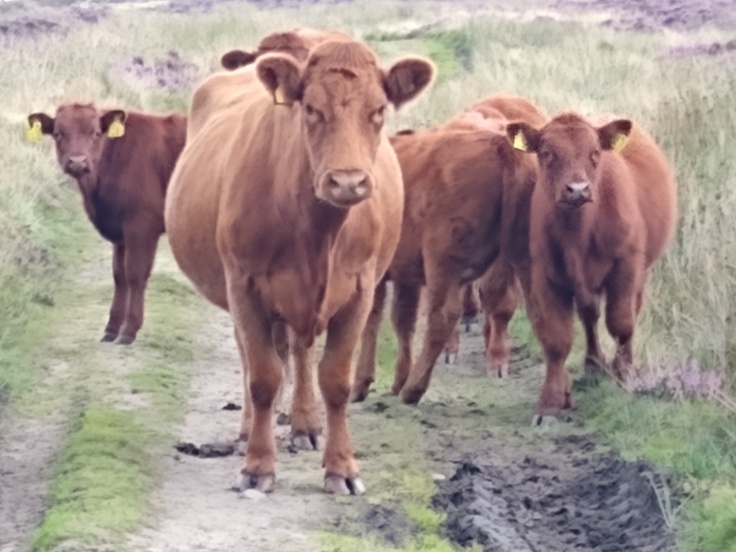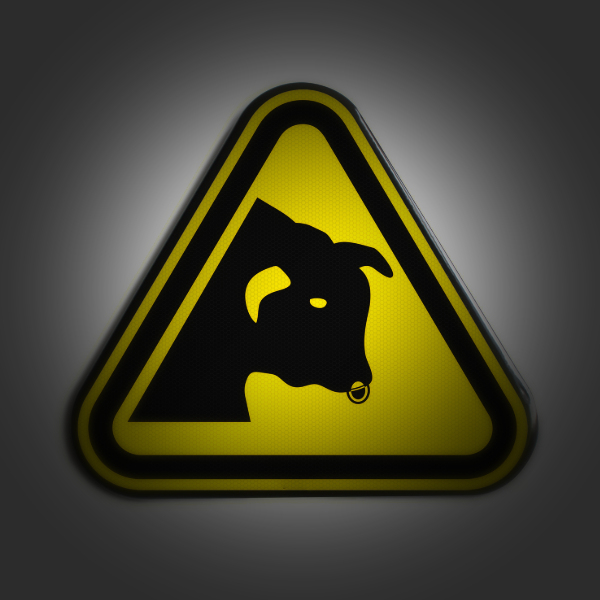You may have heard Adrian Chiles’s radio programme discussing the safety of walking through fields of cattle, if not then head this way – Adrian Chiles – 04/04/2024 – BBC Sounds . Neither the animal behaviourist nor the representative from the NFU on the programme arrived at any conclusions about how we should behave to avoid being attacked by cows. So we ask the question – can we enjoy a walk in the countryside?
This all began because we love walking in our beautiful countryside – and it’s good for us.
The benefits of walking
Natural England has updated the Countryside Code, recognising the significant health and wellbeing benefits of spending time in nature. These benefits are important. England and Wales are blessed with a wonderful network of footpaths, allowing everyone access to our countryside so they can enjoy the benefits to both mind and body that walking in natural surroundings can bring.
But: Killer Cows have received over 800 reports of incidents in the countryside, these are from walkers who have either felt scared or been chased by cattle or, even worse, sustained injuries from cattle – some very severe. Many have been so affected they no longer feel safe enough to walk in the country and so have lost any benefit access to the countryside gave them.

So what do people suggest to do to keep safe?
1) The main thing we are told is if you don’t want to walk in a field with cattle, then just don’t walk in that field, take a detour. Also people advise us to not take dogs into fields with cattle.
We say:
- Not everyone is lucky enough to be able to access cattle-free walks.
- If you’re on a long circular walk and meet cattle on the final leg – detouring may put you into other cattle fields, especially if you’re unfamiliar with the area.
- When you enter a large field it is not always obvious there are cattle grazing in it.
- Half of our reports of cattle scares and attacks are from people who did NOT have a dog. Previously dogs were universally regarded as being a causative element for cattle incidents but The Health and Safety Executive (HSE) data from 2015 onward agree with our findings; that about only 50% of incidents involve dogs.
2) We are told to assess the cattle, and that cattle are naturally curious, so don’t be alarmed if they approach.
We say:
- The HSE has advice for cattle farmers; This states that when you are considering where to keep livestock you should take into account that members of the public are unlikely to be aware of the behavioural characteristics of cattle.
- HSE guidance: Make arrangements for checking both the cattle (for illness or other possible causes of aggression) at least once each day.
- So cattle all trot (which can feel like a charge) over to you – can you spot the difference between normal curiosity and aggression before they get too close?
- If the cattle don’t move when you enter the field and look suitably bored you’re probably ok – but there maybe a “jumpy” cow in the corner that hasn’t spotted you yet.
3) If you see a field of cows with calves then don’t go near them and don’t enter with a dog.
We say:
- Yes, we agree cattle with calves are going to be on high alert. If you have to go through the field take a wide detour around the cattle and don’t get between a mother and it’s calf.
- BUT if it’s an undulating field with bushes in it, you may not spot the calves. You could be well into the field before you become aware of the danger.
- Some beef cattle have more mature calves in the herd and these are not always apparent, but their presence can make the mother cows very jumpy.
- HSE guidance for farmers: Wherever possible keep cattle in fields that do not have public access, especially when cattle are calving or have calves at foot.
4) Others state: It’s the cattle’s home and the farmer’s livelihood, just leave them alone.
We say:
- Most of our footpaths are ancient public rights of way and landowners have a legal duty of care to minimise any risk to people passing along them.
- HSE states: Consider whether it is reasonably practicable to temporarily fence alongside a public right of way so that the cattle and people are kept separate, or an alternative route can be offered.
- We’re not anti farmers, we just don’t want people to get hurt.
5) and lastly some people think Signs are the answer
- Signs warning walkers cattle are in the field: what are these supposed to achieve?
- If it’s to encourage dog owners to be responsible and put their dogs on a lead then fine. If it’s to discourage walkers from accessing the country – not so good.
- Are these signs just saying proceed at your own risk – or do they mean the farmer is confident their cattle are friendly and pose no risk?
- Farmer’s don’t have time to change the signs if they move their cattle – and a sign warning of cattle in an empty field could stop people walking an enjoyable route and ultimately means we don’t bother to pay any attention to signs as they are often warning of something not there.

We have an advice page – Advice for Walkers around Cows – Killer Cows
Here we offer some tips, from walkers and farmers, but please remember no advice works 100% of the time. Following our advice does not guarantee you will cross a field of cattle safely, but it is certainly worth knowing and should reduce your risk of a cattle attack.
There’s also a short video here from a farmer – cattle advice for walkers and runners.
Unfortunately we have had reports from people who have remained calm, didn’t run, yet they were still attacked.
It isn’t all about the dogs: half of our reports come from people who were walking without a dog. Advice is to let go of the dog lead if you are worried – I don’t think I can remember reading a report that stated “I let my dog go and the cattle backed off.”
See this link to the Government advice for landmanagers: follow the Health and Safety Executive’s advice on managing cattle and public access
HSE specific guidance is that all livestock are potentially dangerous and to only approach if absolutely necessary, cattle are a major hazard to the public.
So to sum up…
Cattle are potentially very dangerous, keep a wide berth and keep calm in their presence. The safest option is to separate cattle from walkers, by a fence, if the cattle have to be in the field with the footpath.
Dogs are only involved in half of all incidents, they should be calm and on a close lead as you walk through fields in case there are livestock present and please do pick up your dog poos! We are walking across a working environment and should leave it the way we find it.
Keep safe everyone.
